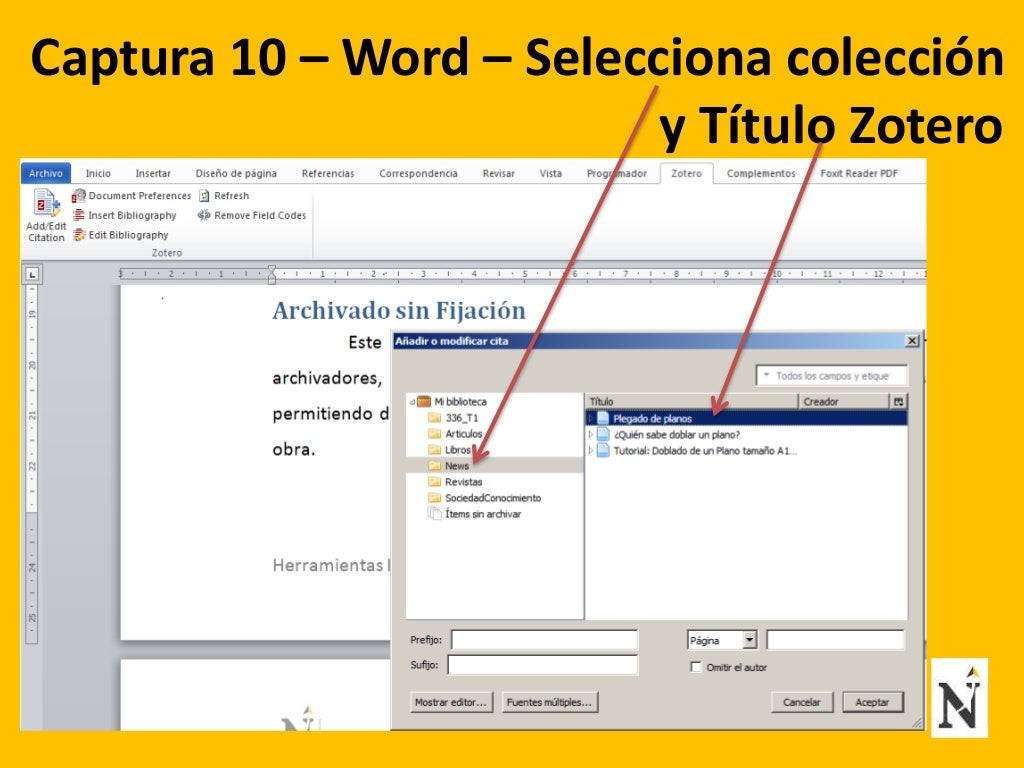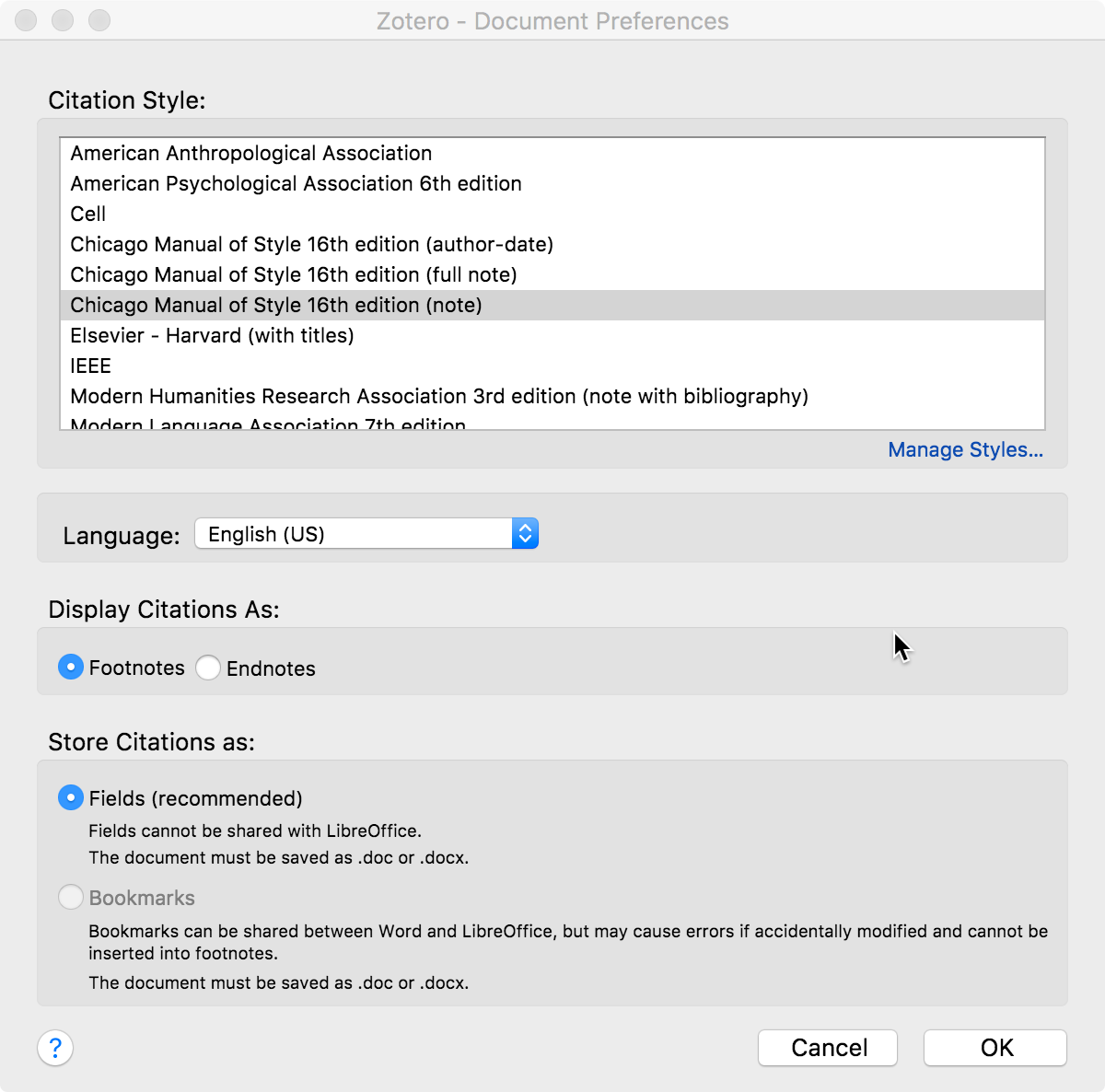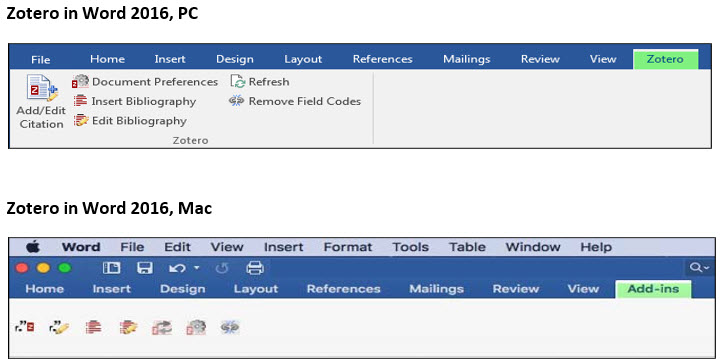

- #HOW TO ACCESS ZOTERO IN WORD HOW TO#
- #HOW TO ACCESS ZOTERO IN WORD DOWNLOAD#
- #HOW TO ACCESS ZOTERO IN WORD WINDOWS#
#HOW TO ACCESS ZOTERO IN WORD HOW TO#
We'll look at how to know what information to include later. Regardless, it is easy to make edits to any citation, to add attachments, and to create tags to organize your information.Įach of these fields is editable simply by hovering your mouse over it. Keep in mind, this is the information the system uses to create citations, so make sure the basic information for your citation style is included. Or perhaps there's information you know about the article that wasn't on the webpage. Perhaps the information the connector picked up from the webpage was incomplete or misspelled. When this happens, the save button will show a folder icon, as in the screen shot below.Ĭlicking this folder icon will open a window where you can select the items that you want to save to Zotero, like this:Įditing citations in Zotero is sometimes necessary. This happens sometimes with databases or services like Google Scholar. Occasionally the system encounters multiple citations (or at least, expects to). You will then need to manually add whatever additional information you want to be included in your record (for example, author, date of publication, etc.) If you click the save button on webpages, Zotero will import the page as a “Web Page” item with a title, URL, and access date. Webpages do not provide metadata that Zotero can recognize and this will be indicated by a gray webpage icon, rather than an icon for a book or journal article. Sometimes you may want to reference a website, webpage, or blog. In this screenshot below, you can see that it has saved information about the article, a snapshot of the website, and even grabbed the PDF! If you're using Chrome and you're on the page for a journal article, then the save button will look like this: If you're using Chrome and you're on the page for a book, then the save button will show a book icon like this:

Here is an example of what the extension button looks like in Firefox. Then click the Zotero extension button, and Zotero will do all the work for you, saving information about this item to your library. This could be a library catalog, a database, Google scholar, or even an Amazon listing (in the case of books). To get a citation for a resource, such as a book or journal article, first go to the webpage for the item. If you need to, you can later edit the entry, but it's pretty accurate as-is! If the item's listing includes a PDF, Zotero will automatically add that as well. The browser extension scrapes bibliographic metadata from the web page of a resource and adds it to your library. There are versions available for Chrome, Firefox, Safari, and Edge. In Safari, browse to source articles.The easiest way to add a citation to your library is by using Zotero Connector, the browser extension. Select (highlight) the folder into which you want your citations collected. So here's a straightforward workflow to start with.
#HOW TO ACCESS ZOTERO IN WORD DOWNLOAD#
has all the download options scroll down for the Zotero Standalone app and the Connector extensions for Safari and Chrome. I much prefer Safari (yay, Reader mode! yay, ctrl-shift-I to email an article!), so it was with delight that I discovered Zotero is now available as a stand-alone app and supports Safari via an extension. I've used it off and on for years, but until recently it supported only the Firefox browser. I'm sure it's a very powerful solution, but for me it's overkill.īy comparison, Zotero is a free, cross-platform, open-source, cloud-enhanced "personal research assistant" that performs critical citation management and bibliography functions. But that solution costs several times what Scrivener itself does. Scrivener natively supports EndNote, a Thomson Reuters bibliography-management package. One thing Scrivener (and Word) is missing is slick citation and bibliography management.

#HOW TO ACCESS ZOTERO IN WORD WINDOWS#
(However, it's available for Windows now, so those editors-and-colleagues are missing a treat if they don't. And, once my draft is done, it exports to Word and other formats beautifully, so editors or colleagues don't need to use Scrivener also. It's easy on the eyes and very thoughtfully put-together- obviously a tool constructed by a writer for writers. Not only is Scrivener more stable and less intrusive for writing than Word, but it has built-in organizing and bookshelf capabilities that help me collect necessary background information, get my thoughts sorted, and chapterize and reorganize things as makes sense. It's founded on a nifty notion: by separating the composition and presentation of written work, both are facilitated. I'm spinning up a lot of writing lately, and I'm finding Scrivener to be a marvelous tool for getting drafts accomplished.


 0 kommentar(er)
0 kommentar(er)
